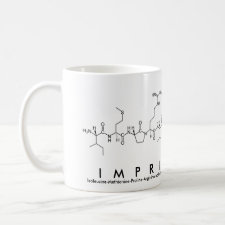
Authors: Zhang LJ, Wang GH, Wu D, Xiong C, Zheng L, Ding YS, Lu HB, Zhang GB, Qiu LZ
Article Title: Highly selective and sensitive sensor based on an organic electrochemical transistor for the detection of ascorbic acid.
Publication date: 2018
Journal: Biosensors and Bioelectronics
Volume: 100
Page numbers: 235-241.
DOI: 10.1016/j.bios.2017.09.006
Alternative URL: http://www.sciencedirect.com/science/article/pii/S0956566317306140
Abstract: In this study, an organic electrochemical transistor sensor (OECT) with a molecularly imprinted polymer (MIP)-modified gate electrode was prepared for the detection of ascorbic acid (AA). The combination of the amplification function of an OECT and the selective specificity of MIPs afforded a highly sensitive, selective OECT sensor. Cyclic voltammetry and electrochemical impedance spectroscopy measurements were carried out to monitor the stepwise fabrication of the modified electrodes and the adsorption capacity of the MIP/Au electrodes. Atomic force microscopy was employed for examining the surface morphology of the electrodes. Important detection parameters, pH and detection temperature were optimized. With the change in the relative concentration of AA from 1 μM to 100 μM, the MIP-OECT sensor exhibited a low detection limit of 10nM (S/N > 3) and a sensitivity of 75.3 μA channel current change per decade under optimal conditions. In addition, the MIP-OECT sensor exhibited excellent specific recognition ability to AA, which prevented the interference from other structurally similar compounds (e.g., aspartic acid, glucose, uric acid, glycine, glutathione, H2O2), and common metal ions (K+, Na+, Ca2+, Mg2+, and Fe2+). In addition, a series of vitamin C beverages were analyzed to demonstrate the feasibility of the MIP-OECT sensor. Using the proposed principle, several other sensors with improved performance can be constructed via the modification of organic electrochemical transistors with appropriate MIP films
Template and target information: ascorbic acid, AA, vitamin C
Author keywords: Organic electrochemical transistors, Molecularly imprinted polymers, Ascorbic acid sensor, Sensor sensitivity, Sensor selectivity



Join the Society for Molecular Imprinting

New items RSS feed
Sign-up for e-mail updates:
Choose between receiving an occasional newsletter or more frequent e-mail alerts.
Click here to go to the sign-up page.
Is your name elemental or peptidic? Enter your name and find out by clicking either of the buttons below!
Other products you may like:
 MIPdatabase
MIPdatabase









